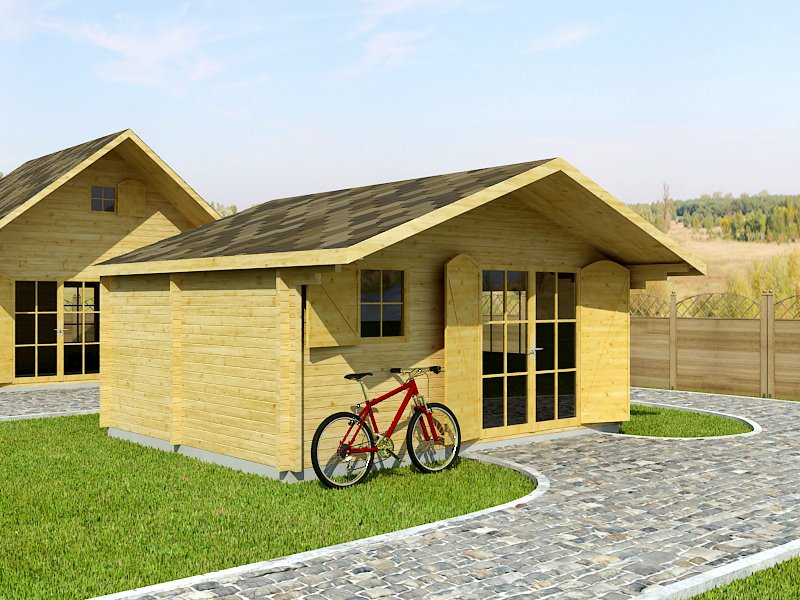
How to Add Plumbing to a Log Cabin
Log cabins offer an architectural style that stands out, increasing property values while offering unique character elements to homes. But for such unique structures to remain functional and efficient requires careful consideration in planning.
Log cabins are structures made up of interlocked horizontal logs interlocked using notches. Their form may be round or squared; handcrafted or milled; with or without tongue and groove joints to seal off their home.
Conventional Plumbing
Conventional plumbing systems make an excellent choice for log cabins due to their reliability. Utilizing copper or PVC pipes for water supply and waste removal, conventional systems are easily routed through walls and floors of log homes allowing easy addition of bathroom fixtures and appliances.
Building plumbing into a log home requires special consideration and care, but working with a professional plumber can ensure a safe and effective system that creates an enjoyable living environment for you and your family. Insulation will also help avoid freezing damage to pipes.
Matt: Electrical and plumbing can be integrated into the construction of your log home from day one. However, full exterior log walls require early notification so contractors can prefabricate electrical chases in preparation for plumbing lines.
If your log cabin features interior framed walls, a plumber will create a chase-way in one of the first-level rooms to run the pipe system. This can either happen simultaneously with framing the drywall, or later when installing it. They will then install and run their pipes throughout its walls, ceilings and floor.
PEX Plumbing
PEX (cross-linked polyethylene) plumbing systems are an ideal choice for log cabins. Easy to install and route through walls and floors without extensive drilling or cutting, PEX pipes have less chance of freezing and bursting than copper pipes; working with a professional plumber to ensure proper support and insulation can help prevent water damage, freezing temperatures and high energy costs.
Since PEX offers only limited flexibility, it is best to plan manifold systems that enable shutting off individual lines at a time rather than multiple fittings connected by tees. This will reduce bends in your lines and ensure optimal flow rates.
Water Heater
Log cabins are an attractive form of dwelling made from logs. Commonly associated with frontier living and hunting activities, log cabins can come in all shapes and sizes from simple hunting huts to multi-room houses. People choose log cabins because of their rustic charm – in addition to providing natural insulation and energy efficiency benefits, choosing the appropriate plumbing system will ensure safe water management as well as provide comfortable living quarters in their log cabin.
Originally, most cabins were handcrafted on-site by their owners; today most are prefabricated in factories and shipped directly to build sites for assembly. This method speeds up construction time while being more cost effective than conventional stud building techniques.
Log cabins may be built using either round or square logs; while round logs tend to provide a more traditional aesthetic, square ones offer greater durability and strength. Round logs require dovetailing and notching to ensure tight fitting between them while square ones may be milled flat inside and out for greater strength, as well as milled with tongue-and-groove profiles on either end with tongue-and-groove profiles for more chinking options depending on builder preference and climate conditions.
Chinking seals the gap between logs to reduce air leakage and enhance energy efficiency, improving energy efficiency and decreasing air leakage. To do this, apply a mixture of sand and sawdust on each log before sealing them with exterior sealant; although not essential to its function or aesthetic appeal.
Wood stoves are a cost- and emission-effective option for heating a log cabin, offering reduced energy costs and carbon emissions while also being healthier alternatives to gas or electric furnaces in terms of not spreading dust, pollen or pet dander around the cabin. Furthermore, adding radiant underfloor heat keeps spaces warm without impacting air circulation issues.
Plumbing Layout
As with any home, installing plumbing in a log home presents unique considerations. These include its layout and how the water pipes run throughout its structure. Otherwise, however, installing plumbing in a log cabin should be no different from doing so in any other form of structure.
Matt Carmer of PrecisionCraft Construction Services states that planning for electrical and plumbing installation begins during the design phase. An architectural designer should take into account where plumbing pipes run when designing the layout of a log home.
Copper or PVC plumbing systems are popular choices in log homes, while PEX (cross-linked polyethylene) has become an increasingly popular alternative due to its cost effectiveness and flexible nature. PEX pipes also tend to be less susceptible to freezing and bursting than traditional metal ones.
Pipes may be installed within log walls to make maintenance and servicing easier in the future; however, for a cleaner and more appealing aesthetic it may be preferable to install plumbing within a chase carved into wall cladding instead.
Ideally, when setting up a conventional plumbing system it is recommended that galvanized steel pipe be used for lines coming directly from your well and pump. Galvanized steel piping also serves well when connecting pumps directly to hot water heaters and for waste water lines heading directly into a septic system.
Pipe systems for log homes may either run through the first-level interior framed walls or through chaseways built into rooms on the second level, depending on which option is chosen for plumbing systems. No matter which option is selected, pipes should always be sufficiently insulated against cold temperatures to protect themselves.
Insulating a log cabin home is crucial to its performance and energy efficiency, particularly where there are gaps or cracks between logs in its roof or floor surfaces. Proper insulation will help minimize heat loss while keeping temperatures within comfortable limits, decreasing utility bills.